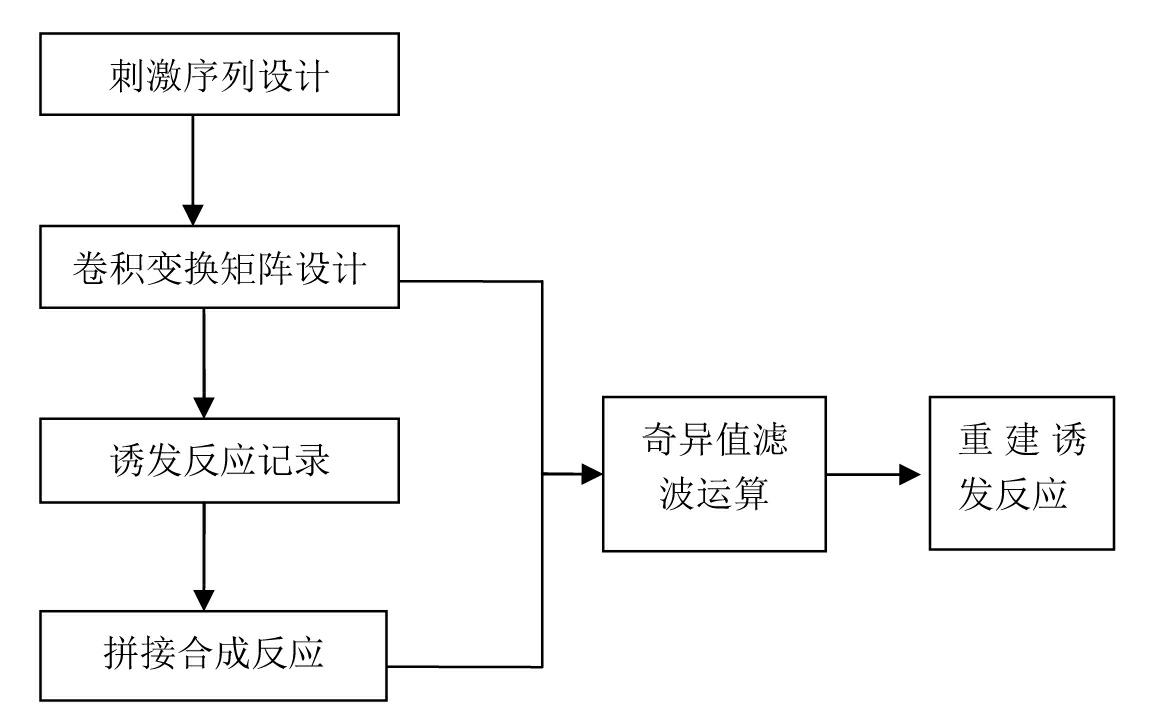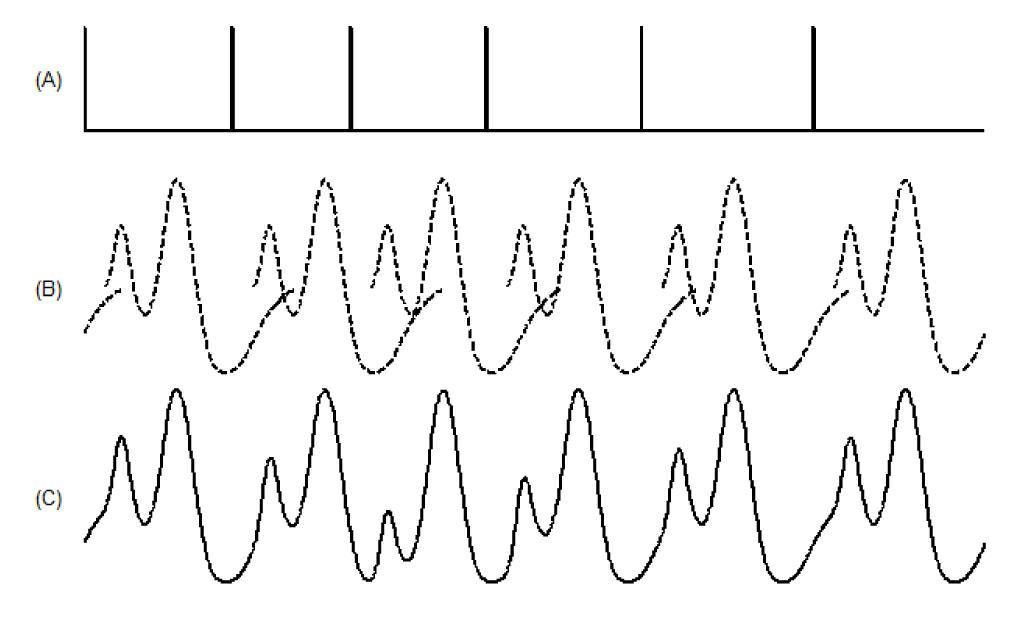Deconvolution method for extracting evoked potential at high stimulation ratio
A technology of evoked potential and deconvolution, applied in the field of biomedical signal processing, can solve the problems of limiting the clinical research and application of high stimulation rate technology, and achieve the effect of improving reconstruction effect, reducing errors and ensuring original characteristics
- Summary
- Abstract
- Description
- Claims
- Application Information
AI Technical Summary
Problems solved by technology
Method used
Image
Examples
Embodiment 1
[0063] Example 1: Reconstruction of simulated EP at high stimulation rate
[0064] In the simulation experiment, 7 different stimulation intervals are used: {16.0, 19.0, 22.0, 25.0, 27.8, 30.8, 33.8, 36.8} ms, and the corresponding stimulation rates are: {62.5, 52.6, 45.4, 40.1, 36.0, 32.5, 29.6 , 27.2} S / s; the EP signal to be recovered consists of three waves with different polarities, see image 3 The dotted line in (B). The responses of one stimulation cycle recorded in each round of experiment are spliced according to the order of stimulation rate to form the observation signal as follows: image 3 (A), where the dotted line represents the observed signal formed by splicing the ideal EP signal, and the solid line represents the observed signal formed by splicing the ideal EP signal after adding a certain degree of random noise. The length of the row of the convolution transformation matrix corresponds to a time of 100ms, so the EP signals will overlap under the seven s...
Embodiment 2
[0066] Example 2: Reconstitution of the AMLR at high stimulation rates
[0067] Use the same equipment as in the previous example. Seven stimulation sequences with stimulation rates of 52.6S / s, 47.6S / s, 43.5S / s, 40S / s, 37S / s, 34.5S / s and 32.3S / s were selected, and the interval between stimulations was constant, respectively 19ms, 21ms, 23ms, 25ms, 27ms, 29ms, and 31ms. The total playing time of each stimulus sequence is the same, about 204.8s, and the number of stimuli contained in the 7 stimulus sequences are 10772, 9748, 8909, 8192, 7578, 7066 and 6615 respectively.
[0068] In the normal test group, the subjects were required to have no hearing and neurological medical history, lie quietly on the examination bed, relax the muscles of the whole body, close the eyes, and stay awake during the test.
PUM
| Property | Measurement | Unit |
|---|---|---|
| Resistance | aaaaa | aaaaa |
Abstract
Description
Claims
Application Information
 Login to View More
Login to View More - R&D
- Intellectual Property
- Life Sciences
- Materials
- Tech Scout
- Unparalleled Data Quality
- Higher Quality Content
- 60% Fewer Hallucinations
Browse by: Latest US Patents, China's latest patents, Technical Efficacy Thesaurus, Application Domain, Technology Topic, Popular Technical Reports.
© 2025 PatSnap. All rights reserved.Legal|Privacy policy|Modern Slavery Act Transparency Statement|Sitemap|About US| Contact US: help@patsnap.com



